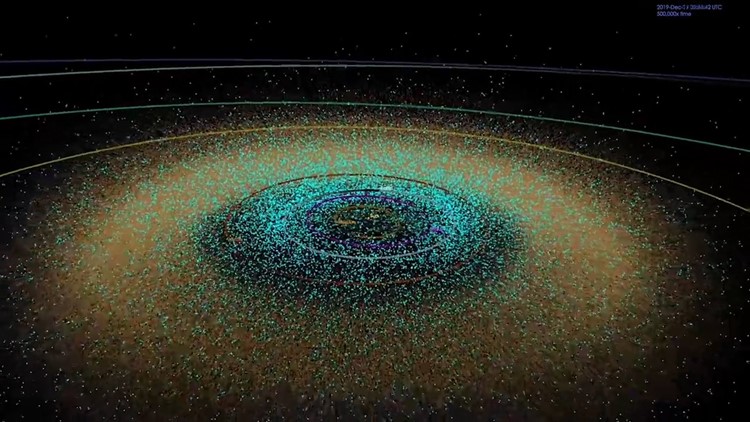Three asteroids flew by Earth Wednesday, although none of them were considered to pose a threat, according to NASA.
The asteroid 2019 OD passed the closest, flying closer to the Earth than the moon. It will cross Earth’s orbit within 222,164 miles of the surface. The moon is 238,900 miles away.
It was only observed by NASA for the first time three weeks ago. It likely passed by around 9:31 a.m. ET today. The asteroid is 393 feet across at its widest point and passing by at 42,926 miles per hour.
The asteroids 2019 OE and 2015 HM10 also zip by Earth Wednesday, the former at 10:36 a.m. ET at a distance of 600,494 miles away and the latter at a distance of 2,914,164 miles early this morning at 2 a.m. ET.
2015 HM10 is 361 feet across at its widest point, moving at 21,273 mph and 2019 OE is 170 feet across moving at 20,244 mph.
In June, astronomers showed that telescopes could provide enough warning to allow people to move away from an asteroid strike on Earth.
Astronomers at the University of Hawaii used the ATLAS and Pan-STARRS survey telescopes to detect a small asteroid before it entered Earth’s atmosphere on the morning of June 22.
The asteroid, named 2019 MO, was 13 feet in diameter and 310,685 miles from Earth. The ATLAS facility observed it four times over 30 minutes around midnight in Hawaii.
Initially, the Scout impact analysis software at NASA’s Jet Propulsion Laboratory deemed the potential impact as a 2. For reference, 0 is “unlikely” and 4 is “likely.” Davide Farnocchia, navigation engineer at JPL, requested additional observations because he noticed a detection near Puerto Rico 12 hours later.
The Pan-STARRS telescope was also operating and captured part of the sky where the asteroid could be seen.
The additional images from the Pan-STARRS telescope helped researchers better determine the entry path for the asteroid, which bumped the Scout rating to 4.
The calculation matched up, and weather radar in San Juan detected the asteroid as it burned up in our atmosphere. It entered the atmosphere over the ocean, 236 miles south of the city.
ATLAS, which is two telescopes 100 miles apart on the Big Island and Maui, scans the entire sky every two nights for asteroids that could impact Earth. It can spot small asteroids half a day before they arrive at Earth and could point to larger asteroids days before.
Although much of the knowledge of their capabilities and determinations about the asteroid was worked out after the fact, astronomers believe that ATLAS and Pan-STARRS could help predict more in the future.



